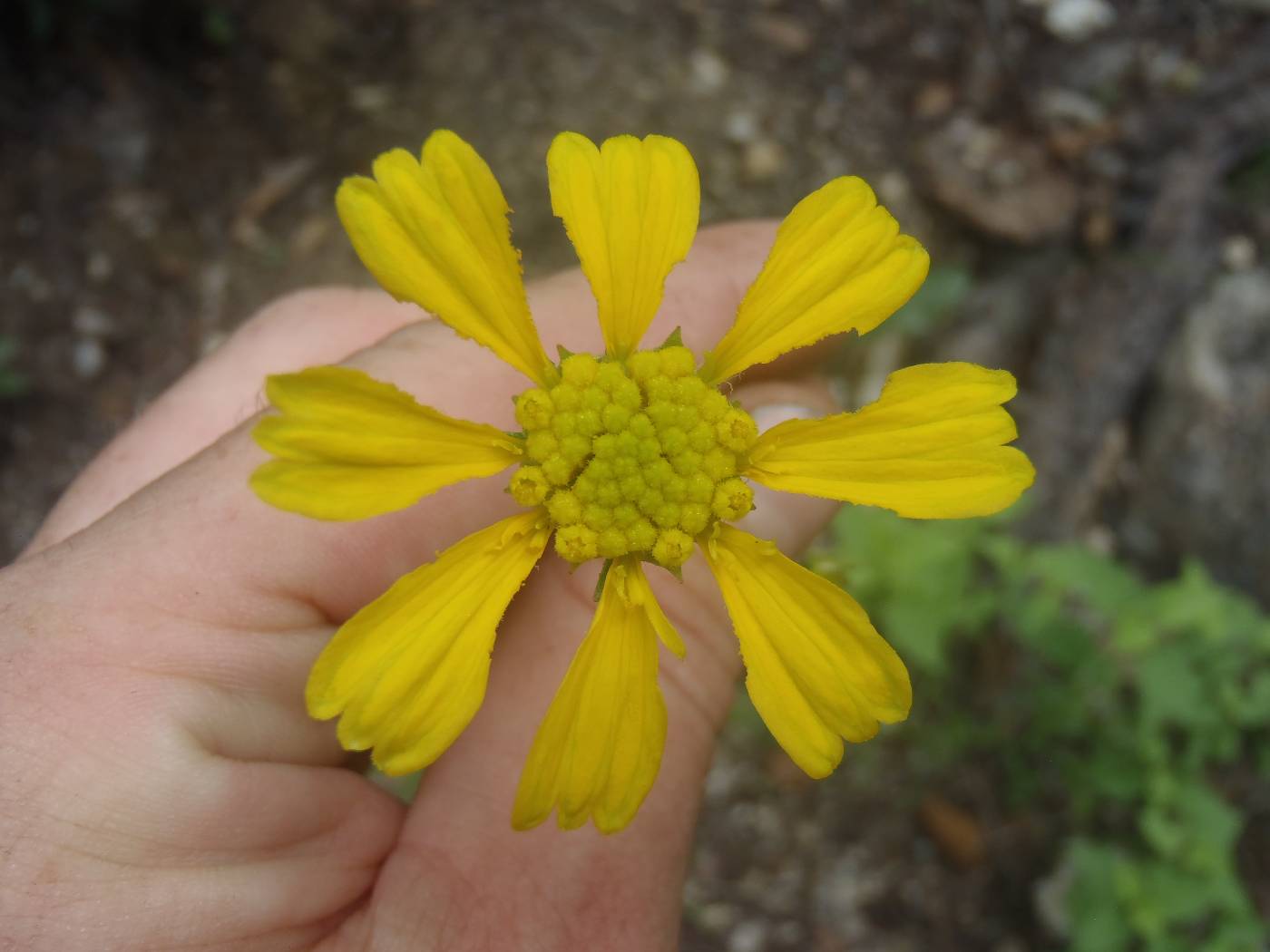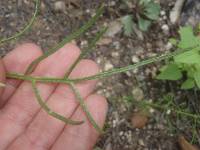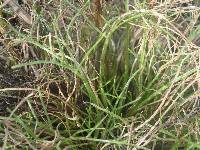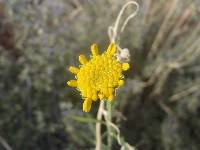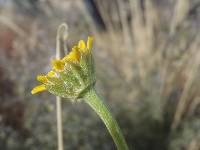Hymenoxys quinquesquamata
|
|
|
|
Family: Asteraceae
Rincon Rubberweed
|
Perennials, 30-100 cm (polycarpic; sometimes with sparingly branched, woody caudices). Stems 1(-3), green throughout or purple-red-tinted proximally, branched distally, ± hairy. Leaves: blades simple or lobed (lobes 3-17), glabrous or sparsely hairy, gland-dotted; mid leaves lobed (lobes 5-11, terminal lobes 0.8-2 mm wide). Heads 5-50+ per plant, in paniculiform to corymbiform arrays. Peduncles 2.5-7 cm, ± hairy. Involucres campanulate, 8-10 × 9-12 mm. Phyllaries in 2 series, unequal; outer 5(-8), basally connate 1/3-1/2 their lengths, obovate to ovate, 6-7 mm, apices acuminate; inner 6-8, obovate, 6.5-8 mm, apices mucronate. Ray florets 5-8; corollas yellow, 14-18 × 7-12 mm. Disc florets 30-100+; corollas 3.5-4.3 mm. Cypselae obpyramidal, 2.5-3.9 mm; pappi of 5-6 obovate, sometimes aristate, scales 1.2-2.5 mm. 2n = 30. Flowering (Jun-)Jul-Sep(-Oct). Open areas, edges of pine-oak forests; 1500-2500 m; Ariz. Hymenoxys quinquesquamata is known from southern Arizona, mostly Huachuca Mountains.
FNA 2006, Kearney and Peebles 1969 Duration: Perennial Nativity: Native Lifeform: Forb/Herb General: Herbaceous perennials, to 100 cm tall, stems 1-3, green throughout or purple-red-tinted proximally, branched distally, herbage canescent, plants usually without a conspicuous basal rosette of spreading or deflexed or persistent petioles. Leaves: Alternate, entire to pinnatifid, with 3-5 lobes, the lobes linear, 1-1.5 mm wide, the faces glabrous or sparsely hairy, gland-dotted. Flowers: Heads radiate, large and few to 50 or more, the rays 5-8, yellow, broad, to 18 mm long and 12 mm wide, the disk 8-15 mm thick, disk flowers yellow, 30-100 or more, involucres campanulate, in 2 or more series, phyllaries unequal, rigid, the outer ones 5-8, very strongly keeled to 3-ribbed, especially in fruit, the keels conspicuously decurrent on the peduncles, inflorescences borne on elongate peduncles conspicuously surpassing the leaves in paniculiform to corymbiform arrays. Fruits: Achenes obpyramidal, 2.5-4 mm, Pappus of 5-6 obovate, sometimes aristate, scales 1.2-2.5 mm. Ecology: Found in open areas, edges of pine-oak forests, from 5,000-7,000 ft (1524-2134 m); flowering April-September. Distribution: Southern Arizona, New Mexico Notes: Differentiate this species from the similar H. cooperi by the number of outer phyllaries; H. quinquesquamata has 5-8 strongly keeled outer phyllaries, while H. cooperi has 10-14 outer phyllaries, these not strongly keeled, this species also has a conspicuous basal rosette, while H. quinquesquamata does not. Ethnobotany: Unknown Etymology: Hymenoxys comes from Greek hymen, meaning membrane, and oxys, meaning sharp or sharp pointed, while quinquesquamata refers to five. Synonyms: None Editor: LCrumbacher 2011 |

